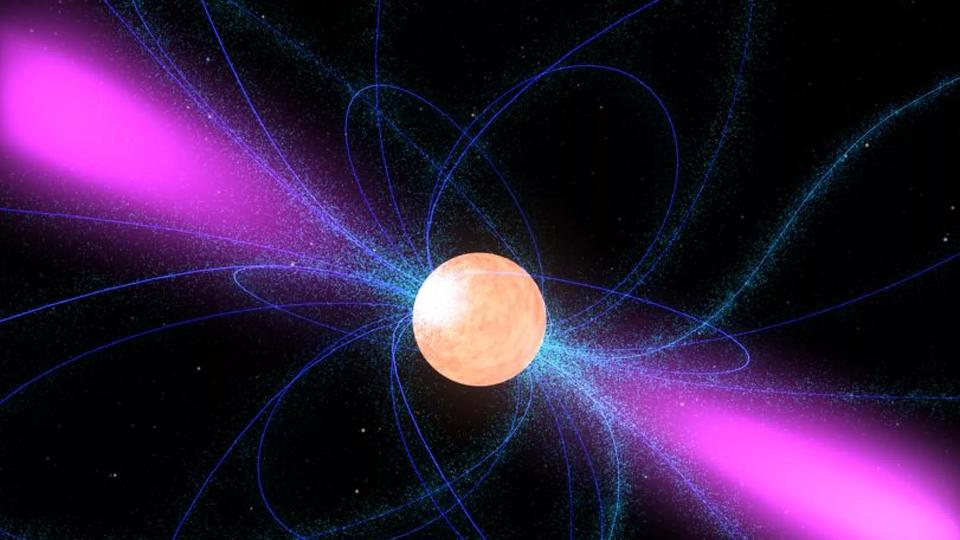Scientists with the Hard X-ray Modulation Telescope (Insight-HXMT) team has performed extensive observations of the accreting X-ray pulsar GRO J1008-57 and has discovered a magnetic field of ~1 billion Tesla on the surface of the neutron star. This is the strongest magnetic field conclusively detected in the universe. This research, published in the Astrophysical Journal Letters, was primarily conducted by scientists from the Institute of High Energy Physics (IHEP) of the Chinese Academy of Sciences and Eberhard Karls University of Tübingen, Germany.

Scientists studied the X-ray pulsar GRO J1008-57 detected by Insight-HXMT during its outburst in August 2017. They discovered for the first time a cyclotron resonant scattering feature (CRSF) at 90 keV at a significance level of > 20σ. (Note that the scientific community confirms a new scientific discovery when its significance level is larger than 5σ.) According to theoretical calculations, the magnetic field that corresponds to this CRSF is up to 1 billion Tesla, which is tens of millions of times stronger than what can be generated in Earth laboratories. As for example, the strength of Earth’s magnetic field is 0.000032 T or this of a typical refrigerator magnet is 0.005 T. Also, the strength of the Large Hadron Collider (LHC) magnets is around 8 T, while the magnetic field strength required to levitate a frog (by diamagnetic levitation of the water in its body tissues) according to the 2000 Ig Nobel Prize in Physics is 16 T. Higher strengths of magnetic fields are observed in the Universe, such as a typical White dwarf star with an approximate magnetic field strength of 100 T. The magnetic strength range of the magnetar neutron stars (as in this case) range between 100 millions and 100 billions Tesla.
Insight-HXMT is the first Chinese X-ray astronomical satellite. It comprises scientific payloads, including a high-energy telescope, a medium-energy telescope, a low-energy telescope, and a space environment monitor. Compared with other X-ray satellites, Insight-HXMT has outstanding advantages in the detection of cyclotron lines (especially at high energies) due to its broadband (1-250keV) spectral coverage, large effective area at high energies, high time resolution, low dead time and negligible pile-up effects for bright sources.

Neutron stars have the strongest magnetic fields in the universe. Neutron star X-ray binaries are systems consisting of a neutron star and a normal stellar companion. The neutron star accretes matter and forms a surrounding accretion disk. If the magnetic field is strong, the accreted matter is channeled by magnetic lines onto the surface of the neutron star, resulting in X-ray radiations.
As a result, these sources are also called “pulsars.” Previous studies have shown that a peculiar absorption feature (known as a “cyclotron resonant scattering feature”) can sometimes be found in the spectrum of X-ray pulsars. Scientists believe this is caused by transitions between the discrete Landau levels of electronic motion perpendicular to the magnetic field. Such a scattering feature acts as a direct probe to the magnetic field near the neutron star’s surface.
Insight-HXMT was proposed by IHEP in 1993 and was successfully launched in June 2017. IHEP is responsible for scientific payloads, ground segments and scientific research involving this satellite.
Source: phys.org

